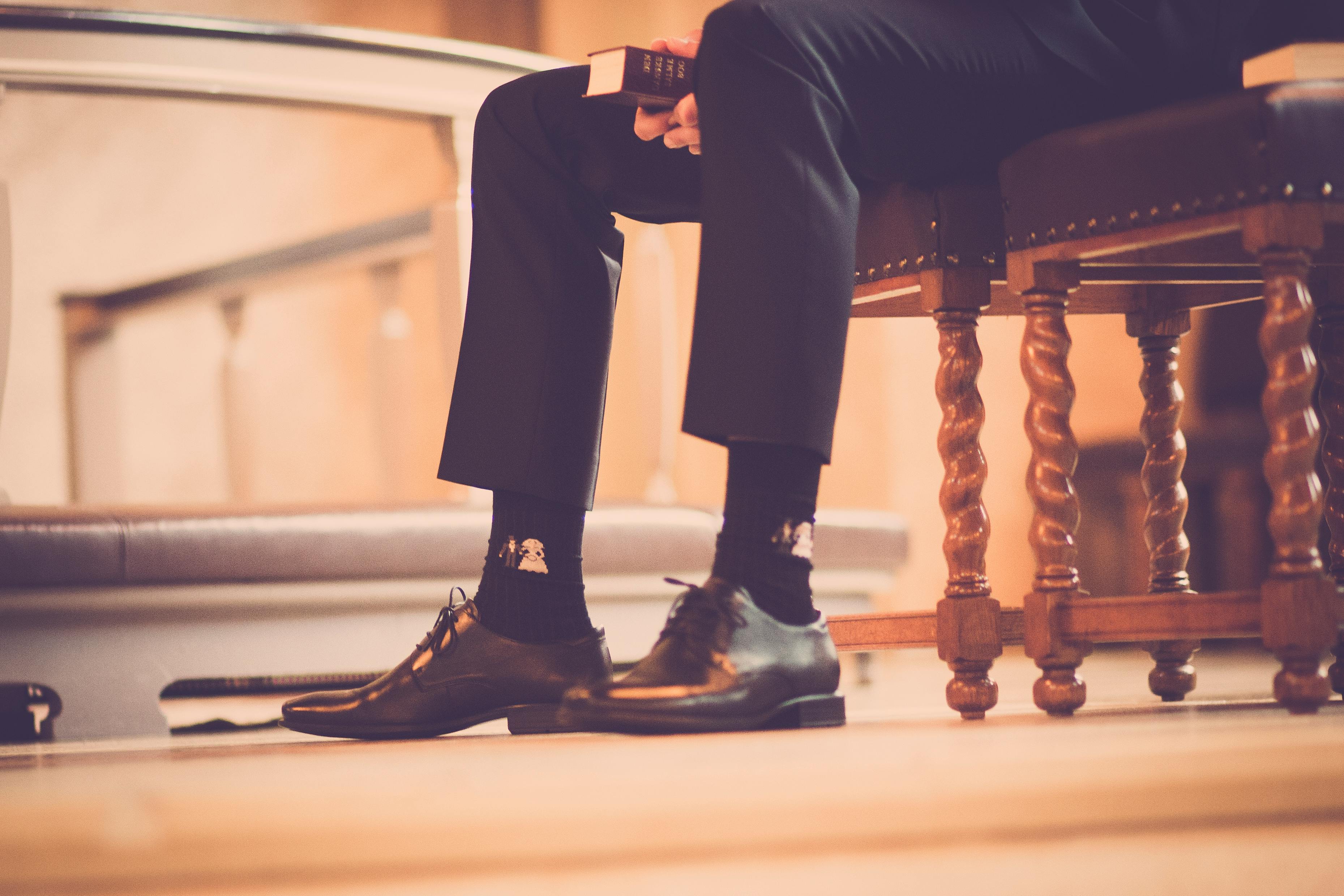How Many Hours Should You Wear Compression Socks

Compression socks are a type of specialised sock designed to provide extra support to the leg and foot muscles. They are often worn by people who suffer from medical conditions such as deep vein thrombosis, varicose veins, or other conditions that can cause leg swelling and discomfort. But how long should you wear them for? This article will explain how many hours you should wear compression socks for maximum benefit.Compression socks are a type of medical or sports garment designed to apply pressure to various parts of the leg. They are typically made of a stretchy material and designed to fit snugly around the leg. The main purpose of compression socks is to improve circulation and reduce swelling. They can also be used to reduce muscle fatigue, improve recovery time after exercise, and help with varicose veins.
1. Improved Circulation
Compression socks are an effective way to improve circulation in the legs. By applying gentle pressure around the calves, ankles, and feet, they help to move blood and other fluids away from the extremities. This helps to reduce swelling, soreness, and fatigue in the lower legs. Compression socks can also reduce the risk of blood clots forming in veins or arteries, which can be a serious health concern for some people.
2. Reduced Swelling
Compression socks work by applying gentle pressure around the feet and legs to reduce swelling. This can help alleviate symptoms of edema or other inflammatory conditions that cause fluid retention in the lower extremities. It also helps support healthy circulation and can even reduce discomfort when walking or standing for long periods of time.
3. Increased Comfort
Compression socks are designed to provide supportive comfort for your feet and legs when you’re on your feet for extended periods of time. The material used is usually lightweight and breathable so it doesn’t feel too restrictive or uncomfortable while providing necessary support for your legs.
4. Improved Performance
Compression socks have been shown to improve performance during physical activities like running or cycling by providing better support for muscles and joints in the lower extremities. They also help reduce fatigue by improving circulation during exercise, allowing you to work out longer with less fatigue.
5. Relief from Painful Conditions
Wearing compression socks can be beneficial for those suffering from painful conditions such as varicose veins, plantar fasciitis, shin splints, Achilles tendonitis, and more. The compression helps reduce swelling which can provide relief from pain associated with these conditions. They also help protect against future injury by providing extra cushioning and support.
Overall, wearing compression socks can be beneficial for people of all ages who are looking to improve their circulation, reduce swelling or discomfort in their lower extremities, enhance performance during physical activities, or even provide relief from painful conditions like varicose veins or plantar fasciitis.
What Is the Purpose of Compression Socks?
Compression socks are specially designed socks that provide graduated compression to help reduce swelling and promote circulation. They are often worn by people who have medical conditions such as varicose veins, thrombosis, diabetes, or lymphoedema. Compression socks help to reduce inflammation and pain caused by these conditions and can be used to improve blood flow in the legs. In addition, they can help reduce the risk of deep vein thrombosis (DVT) and other vascular disorders. Compression socks come in a variety of sizes, styles, and lengths to accommodate different leg sizes and shapes. They are available in a range of colors and patterns, so it’s easy to find a pair that suits your individual style.
Compression socks also provide support for muscle fatigue during activities such as running or walking. The graduated compression helps maintain blood flow throughout the body while providing extra support for the muscles in your lower legs during physical activities. This can help reduce lactic acid build-up which may lead to cramping or fatigue during exercise. Additionally, compression socks can be used to relieve leg pain after long periods of standing or sitting as well as to prevent swelling caused by long flights or car trips.
How Do You Determine the Right Fit for Compression Socks?
Finding the right fit for compression socks can be difficult, but it is important to ensure that you get the best possible results from your purchase. The right fit will help ensure that your compression socks provide the desired level of support and comfort. The following tips will help you determine the right fit for your compression socks:
1. Measure Your Legs: It is important to measure your legs before purchasing a pair of compression socks. You should measure around the widest part of your calf as well as around your ankle and foot. This will help you determine the correct size for your compression socks.
2. Choose Your Compression Level: Compression socks come in various levels of compression, ranging from light to firm. If you are new to wearing compression socks, it is best to start with a light level of compression and then work up if needed.
3. Look at the Fabric: Compression socks are usually made from nylon, spandex, or other stretchy fabrics that provide breathability and comfort. Make sure to choose a fabric that feels comfortable against your skin and fits properly without being too tight or loose.
4. Consider Your Activity Level: If you plan to wear your compression socks while participating in high-intensity activities such as running or playing sports, then look for a pair with more support and cushioning. On the other hand, if you plan to wear them while sitting or sleeping then a lighter weight fabric may be more suitable for you.
5. Try Them On: Always try on your new pair of compression socks before purchasing them so that you can make sure they fit properly and offer sufficient support for your needs. It is also important to ensure that they are not too tight or uncomfortable as this can reduce their effectiveness and cause discomfort over time.
By following these tips, you should be able to find a pair of compression socks that are comfortable and provide adequate support for whatever activities you plan on participating in while wearing them.
How Long Should You Wear Compression Socks for Maximum Benefit?
Compression socks are specialized socks designed to provide medical benefits. They are used to improve circulation, reduce swelling, and alleviate pain in the legs, feet, and ankles. Wearing compression socks can help to reduce the risk of developing varicose veins, and can also help people who already have them. But how long should you wear compression socks for maximum benefit?
The amount of time you should wear compression socks depends on your individual needs and circumstances. Generally speaking, it is recommended that you wear them for at least two hours a day. However, some people may need to wear them longer than others depending on their condition or activity level. It is important to talk to your doctor about the right amount of time for your individual situation.
Compression socks should be worn during any activity that requires a lot of standing up or walking around. This could include work or leisure activities such as running, walking, or gardening. If you are sitting down for extended periods of time, it is important to take breaks and move around every 30 minutes in order to prevent deep vein thrombosis (DVT). Wearing compression socks during these activities can provide additional support for your legs and feet while helping improve circulation.
When sleeping at night, it is beneficial to wear compression socks in order to promote good circulation throughout the night as well as reducing swelling when you wake up in the morning. Additionally, wearing them during air travel can help reduce your risk of developing DVT due to the reduced cabin pressure on airplanes that causes circulatory problems in some people.
Overall, it is important to talk with your doctor about how long you should be wearing compression socks in order to get the most benefit from them depending on your individual needs and circumstances. Wearing them consistently throughout the day during any activity that requires standing or walking can help improve circulation and reduce swelling while also providing extra support for your legs and feet.

When Should I Not Wear Compression Stockings?
Compression stockings are designed to provide support to the legs and improve circulation. While they can be beneficial for some people, they are not appropriate for everyone. Before wearing compression stockings, it is important to understand when they should not be worn.
Compression stockings should not be worn if a person has open wounds or skin infections on their legs. The pressure of the stocking can make these conditions worse and can slow down healing. Additionally, people with allergies or sensitivities to certain fabrics should not wear compression stockings made from those fabrics.
Compression stockings should also not be worn if a person has poor circulation in their legs due to a medical condition such as deep vein thrombosis or peripheral artery disease. In these cases, wearing compression stockings could impair blood flow even further and lead to serious complications. People with diabetes should also avoid wearing compression stockings as they may cause further damage to already sensitive feet.
Finally, it is important to speak with a doctor before wearing compression stockings to ensure that they are appropriate for an individual’s health and medical history. This is especially important for people who have high blood pressure as the added pressure from the stocking could lead to dangerous spikes in blood pressure levels.
How Often Should You Change Your Compression Socks?
Compression socks can help reduce swelling, fatigue, and aching in your legs, feet, and ankles. While they are beneficial for many people, it is important to know how often you should change them. Depending on the type of compression socks you choose and how often you wear them, they should be replaced every one to two months.
For those who wear compression socks daily, it is important to replace them more frequently. Over time, the fabric of the compression socks will begin to stretch out and lose their effectiveness. It is recommended that these individuals replace their compression socks every month or two.
It is also important to consider the type of activity or exercise that you are doing when wearing compression socks. If you are engaging in high intensity activities such as running or other sports activities, then you may need to replace your compression socks more frequently due to the increased wear and tear on the fabric.
Finally, it is important to properly care for your compression socks in order to extend their life. Make sure that they are washed regularly in cold water with mild detergent and hung dry or laid flat. Do not use bleach or fabric softener as this can damage the fabric of the sock. Additionally, make sure that there are no holes or tears in the fabric of your compression socks before putting them on as this can cause irritation or discomfort when wearing them.
By considering these factors and replacing your compression socks regularly, you can ensure that you get optimal benefits from wearing them and help keep your legs healthy and comfortable.
Is There a Recommended Duration for Wearing Compression Socks?
When considering the benefits of compression socks, understanding compression sock duration is essential. Experts generally recommend wearing them for at least 8-12 hours, especially during long flights or extended periods of standing. However, individual needs may vary, so it’s wise to consult a healthcare professional for personalized guidance.
What Are the Side Effects of Wearing Compression Stockings for Too Long?
Compression stockings are an important part of medical support and treatment for many people. They provide compression to the lower legs, which helps reduce swelling, fatigue, and pain. Unfortunately, there can be side effects to wearing compression stockings for too long.
The most common side effect is skin irritation. When worn for extended periods of time, compression stockings can cause skin irritation in the form of rashes, chaffing, and itching. This is because they can trap sweat and moisture against the skin and cause friction when they move against it. Additionally, if the compression is too tight or the material is not breathable it can also cause irritation.
The second potential side effect is nerve damage. If a person wears compression stockings that are either too tight or too loose this can lead to nerve damage in their legs. Compression stockings that are too tight may cause a tingling sensation or numbness in the legs due to restricted circulation in nerves and blood vessels. On the other hand, if they are too loose, this can also cause nerve damage by allowing blood vessels to become overstretched or kinked as well as increasing risk of infection due to lack of pressure on them from the stocking.
Finally, another potential side effect of wearing compression stockings for too long is decreased circulation in your legs. If a person wears them for an extended period of time without taking them off for breaks then this could lead to a decrease in circulation due to restricted blood flow from having them on so tightly or loosely around their legs. This could potentially lead to other serious health complications such as deep vein thrombosis (DVT).
In conclusion, while compression stockings are a great way to reduce swelling and fatigue in your lower legs, it is important not to wear them for too long as there could be potential side effects such as skin irritation, nerve damage and decreased circulation which could lead to more serious health problems down the line if not treated properly

Conclusion
Compression socks are a helpful tool for many individuals who experience swelling, aching, or overall discomfort in their lower legs and feet. While the recommended wear time may vary depending on your level of activity and medical condition, it is generally accepted that 8-12 hours of wear per day is ideal. It’s important to note that compression socks should be removed at night to allow the skin to breathe and prevent any potential irritation. Ultimately, wearing compression socks should give you relief from your symptoms while also helping you stay active and fit.
If you are considering wearing compression socks for your leg health, it’s best to talk with a doctor about which type of compression sock might be best for you. You should also discuss the ideal amount of time each day that you should wear them given your lifestyle and medical needs. With the right combination of quality compression socks and optimal wear time, you can look forward to improved leg health and increased comfort in no time!
